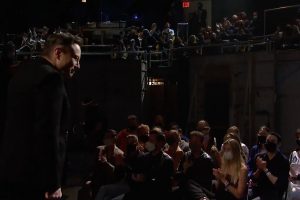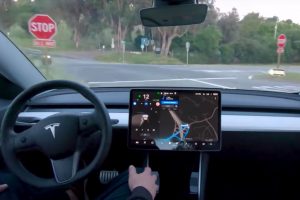Elon Musk recently shared some information about Tesla’s mRNA microfactories for the production of CureVac’s COVID vaccine. CureVac released a press release in February 2019 that referred to a bioreactor called The RNA Printer. Musk’s recent tweet provided some information about the Tesla bioreactor developed for mRNA vaccine initiatives by CureVac.
“Tesla makes the RNA Bioreactor that can make vaccines/cures. Curevac has Version 2 in use. Version 3 is under development. I do expect this to become an important product for the world, but probably not financially for Tesla,” Musk said as a response to a Tesla owner-investor @SamTalksTesla inquiry on Twitter.”
In July 2020, Musk addressed the relationship of Tesla with CureVac and shared his thoughts about the potential of synthetic RNA and DNA. Musk referred to diseases at the time as a “software problem.” Tesla seems more than capable of developing technology to produce mRNA vaccines on a scale from this perspective. In September, Musk visited the CureVac headquarters in Tübingen, Germany, to address the contribution of Tesla subsidiary Grohmann Automation to the production of CureVac’s mRNA COVID vaccine.
Compared to conventional ones, mRNA vaccines are simpler to manufacture and scale. During the development stage of CureVac’s COVID vaccine, Tesla’s RNA bioreactor will come into play once it is licensed. Tesla’s RNA bioreactor could play a key role in making CureVac’s COVID vaccine easily available to the public due to the scalability of mRNA vaccines.
CureVac announced promising results last week in Phase 1 of its candidate for the COVID vaccine. “We are very encouraged by the interim Phase 1 data. It represents a critical milestone in our COVID-19 vaccine program and strongly supports the advancement of our vaccine candidate,” said Dr. Franz-Werner Haas, CureVac Chief Executive Officer.
“Following further data readouts and discussion with regulatory authorities, we remain fully committed and on track to initiate a pivotal Phase 2b/3 trial before the end of 2020,” he added.
There have been no mRNA vaccines approved for infectious diseases as of this post, since they are relatively new in the medical world. This new form of vaccine allows scientists to develop synthetic mRNA, which includes an infectious protein code that generates the molecules of a virus.
It is unlikely for vaccines that create synthetic mRNA to form a complete virus, but they can produce enough parts of it to activate the body’s immune system. The human body has innate immunity, which is the protection mechanisms with which we are born, and acquired immunity, which grows when we come into contact with pathogens over time. Traditional vaccines function more for the immune system acquired, while mRNA vaccines have the ability to activate the innate immune system of the body. Since mRNA vaccine patients are unable to develop full viruses, they can not transmit the disease either.
Want to buy a Tesla Model 3, Model Y, Model S, or Model X? Feel free to use my referral code to get some free Supercharging miles with your purchase: http://ts.la/guanyu3423
You can also get a $100 discount on Tesla Solar with that code. Let’s help accelerate the advent of a sustainable future.





